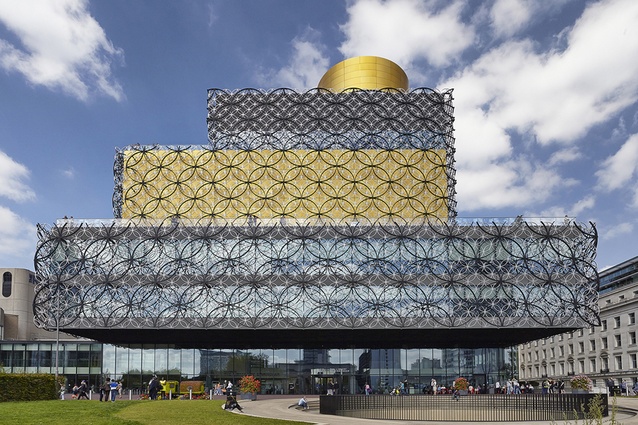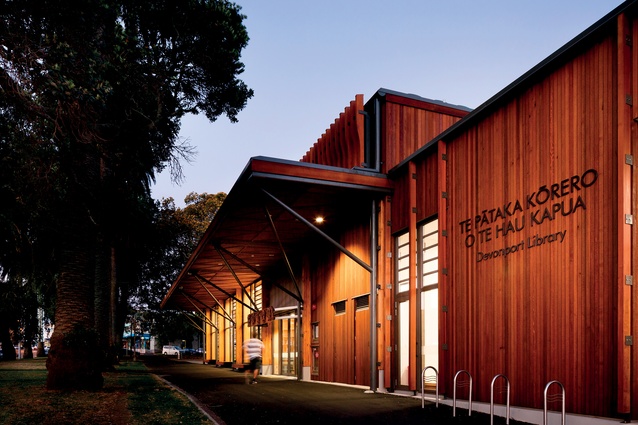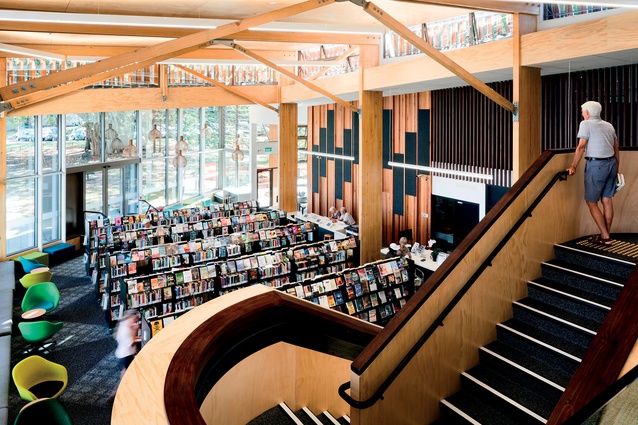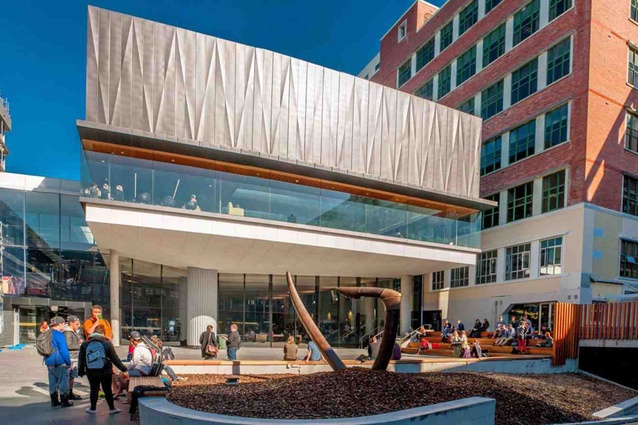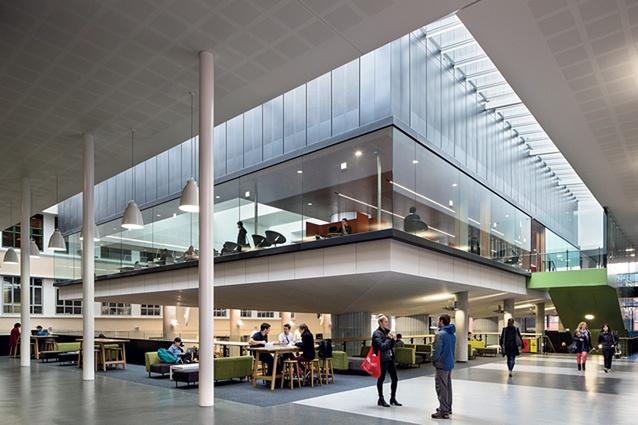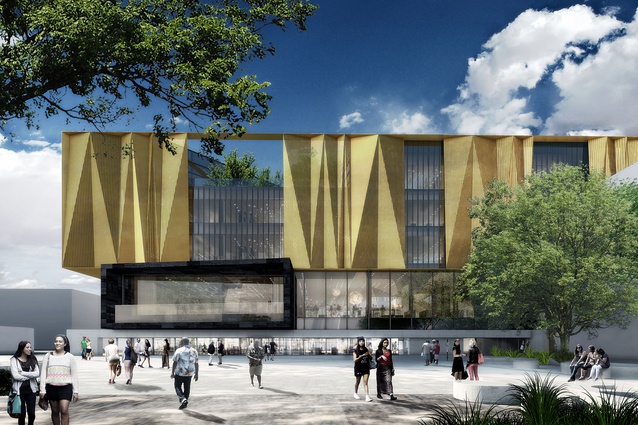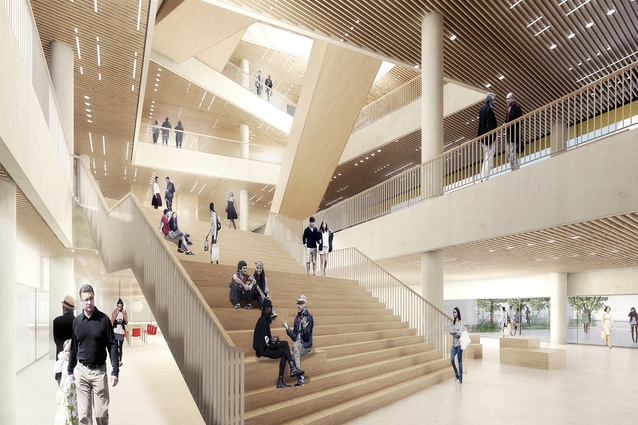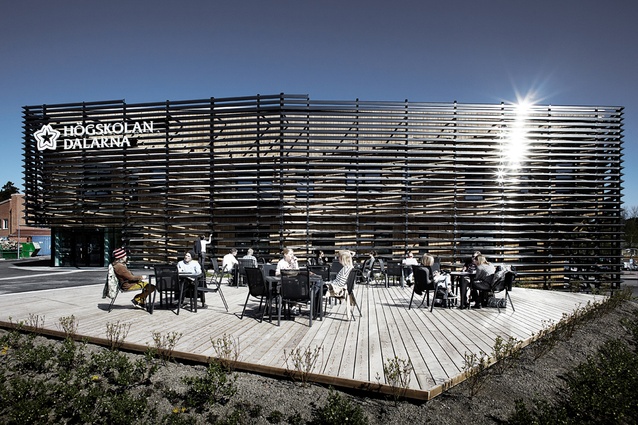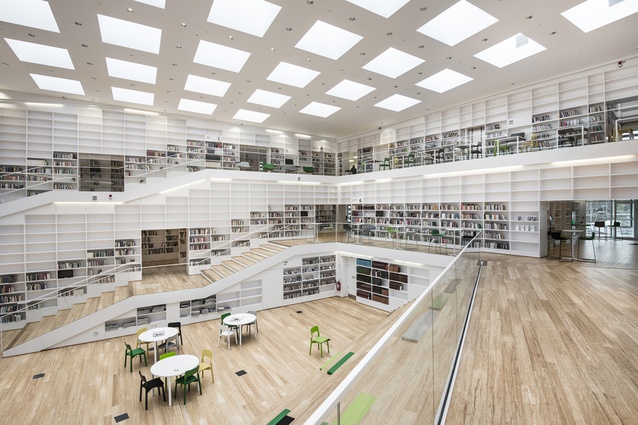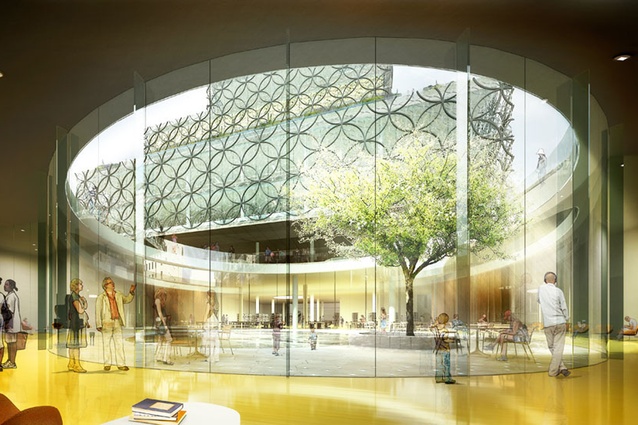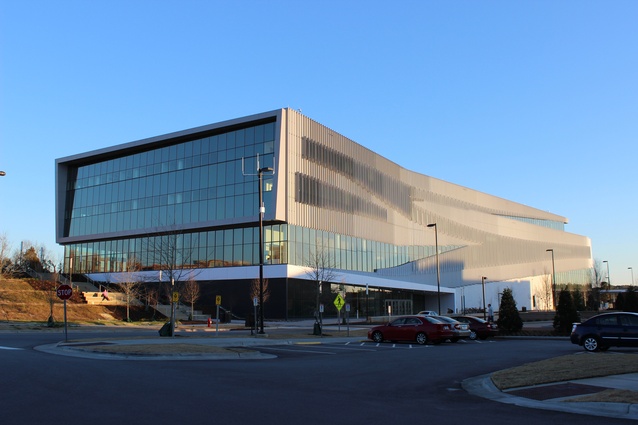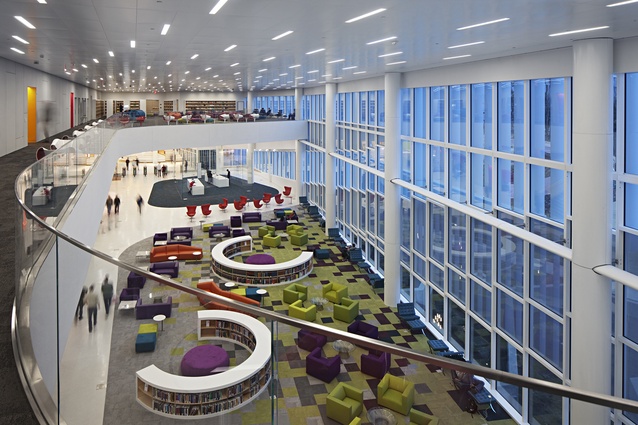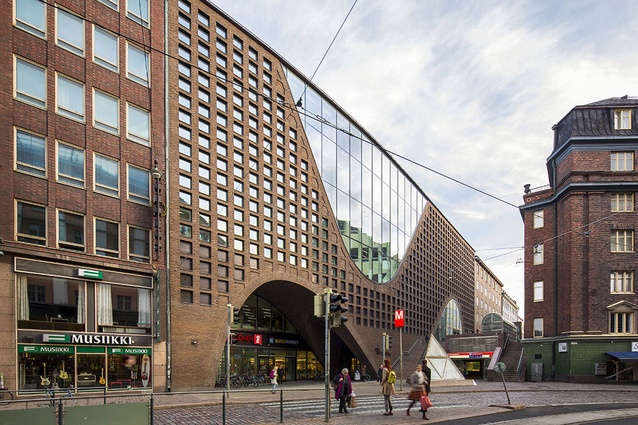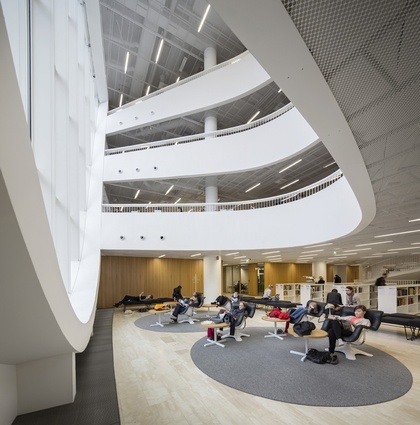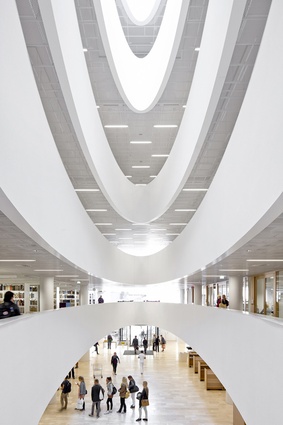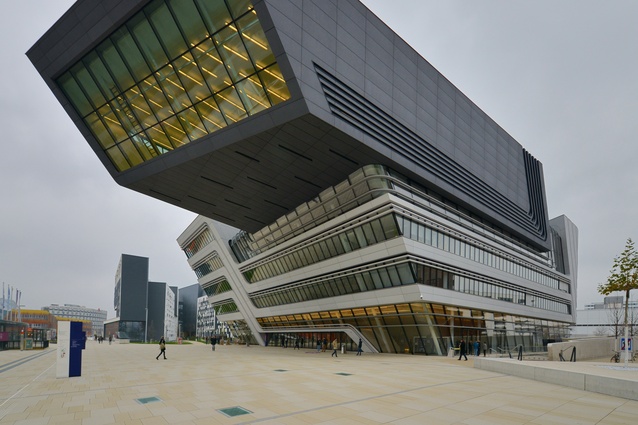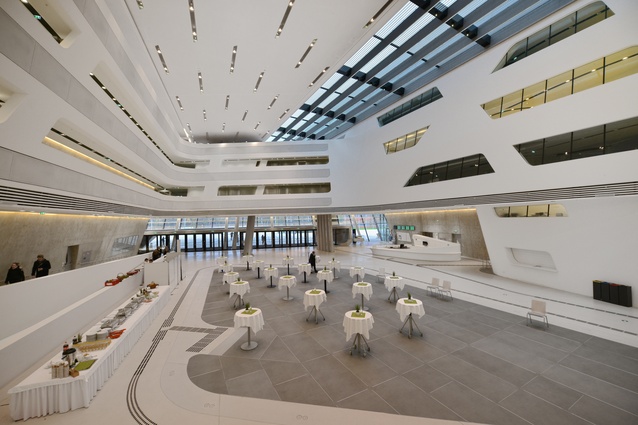The evolving library
With the rise of Amazon and the Kindle for reading novels, the ease of downloading movies on demand and most reference questions answered in mere seconds by Google, the concept of the library, at least as we have known it, seems somewhat archaic. By 2018, ebooks are on course to outsell printed editions in the United Kingdom, with the consumer ebook market forecast to almost triple from £380 million to £1 billion over the next four years.
Alongside publishers and librarians, architects are amongst the people most concerned about how these rapid changes will play out. Designing a library for today’s technologically-savvy world is not easy. Flexibility of function and space is perhaps key: varied, efficient spaces that are multi-functional and adaptable. A library is almost like a home away from home, it must include spaces that create community as well as where one can find solitary retreat.
A modern, forward-thinking library must be technologically advanced, and be able to provide contemporary and engaging services and programs. Sustainable spaces with outdoor and green areas are likewise as important, along with the ability to provide abundant natural light.
Carsten Auer, project director of the Christchurch central library, comments, “A library is no longer just a repository of books, it is a social and information hub that combines both physical and digital media. A library is a type of ‘third space’, a place between work and home where the public can come to be entertained, informed and socialise in a public setting.”
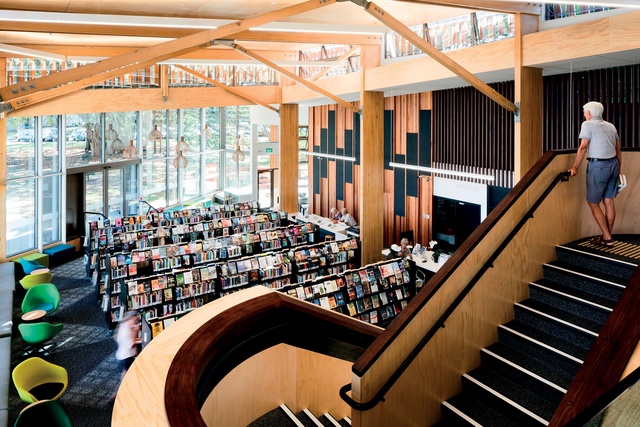
In New Zealand, we have several new or to-be completed libraries that address these issues. Jon Rennie, director at Athfield Architects, comments, “the design and planning of the Devonport library supports the changing role of contemporary librarians. They are moving from being the gatekeepers of knowledge to the public’s navigators of it. In turn libraries are shifting from places of collection to spaces of curation, where both physical and digital content is attractively presented to the public.”
Along with the provision of wifi in both the library and neighbouring park, the Devonport library offers plenty of flexible space. Rennie states, “the building provides the community with varied spaces to gather, commune and do what they want – a fireside area for contemplative reading, ipad bar for digital access, tiered seating for group discussion, community room for assembly and all spaces with quality furniture for both study and browsing.”
There are large clerestory windows for plentiful light, and natural ventilation throughout the space. “The building was designed as a type of ‘verandah’ – a pavilion sitting in the park and providing shelter. Natural ventilation is not only low energy consuming, it also provides an audible connection between the interior and exterior,” says Rennie.
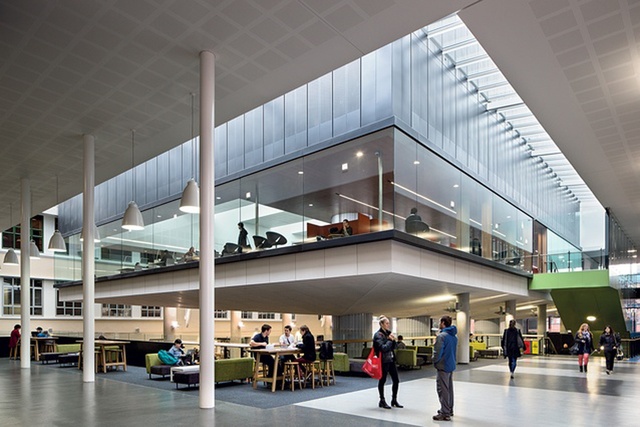
Learning and social functions are no longer separate, and recognising this, Victoria University of Wellington’s library and campus hub succeeds largely in blurring the boundaries of elements of the library with the social learning and recreational functions of the hub.
The library’s reading room has a high quality of natural lighting and a peaceful, internal composure, and is intrinsically linked to the student common below through various interfaces, while the central outdoor space has been upgraded and improved to encourage usage.
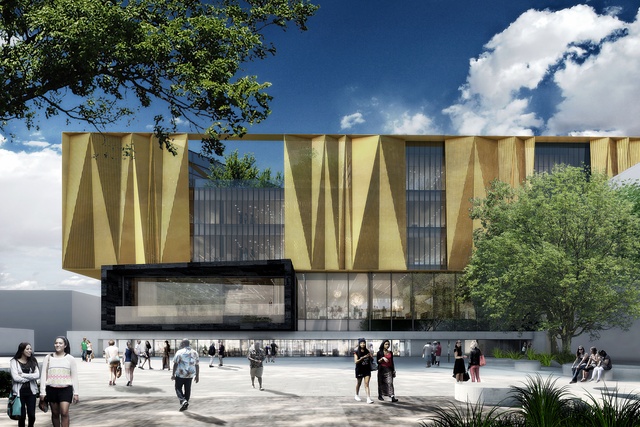
Christchurch’s new central library is designed by Architectus in association with schmidt hammer lassen and will boast a large welcoming foyer designed to be an extension of the public open space of the square. Creating a link to the neighbouring Performing Arts precinct and convention centre, there will also be a cafe, retail space and an innovation area displaying new technology.
Continuing to demonstrate the flexibility of space, the library will also have a 200-seat community arena, recreation and activity areas, exhibition space, and areas for families, children and youth alongside the library’s digital, specialist and print collections. Outdoor seating areas have been added and the outdoor terraces are positioned to face culturally important points such as Mount Cook, Banks Peninsula and Mount Grey.
There is an abundance of quality, modern library design across the world. Below we showcase several interesting and innovative designs from Europe to the United States.
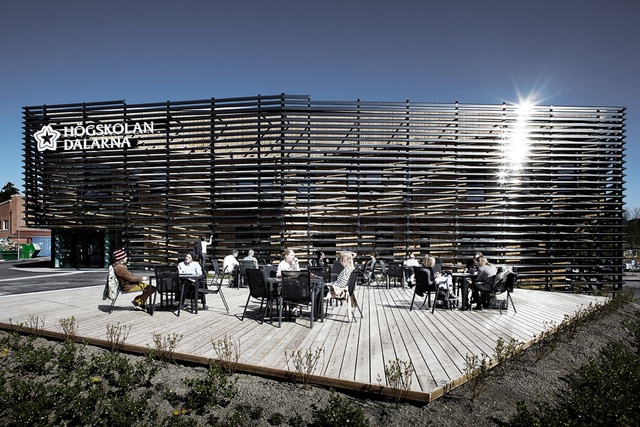
According to Danish design studio ADEPT, a ‘spiral of knowledge’ wraps around the interior of Sweden’s Dalarna media library, in the town of Falun. This winding staircase works its way around the classical arena design of the library, creating flexibility of space through an open central space to smaller, quiet zones on the outside, suitable for in-depth study work and reading.
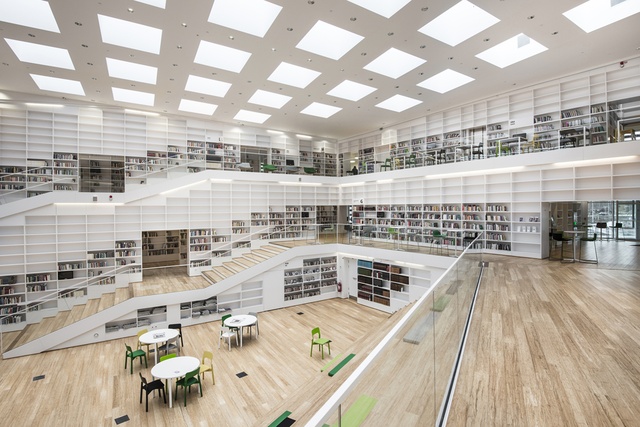
Steps at the lower level of the space double as theatre-style seating for concerts, and a large television can be used for screening news, events or movies. The media library is multi-functional, suitable for events such as lectures, theatre, classical concerts, alongside the standard library functions. Architect Martin Laursen comments that it was important the library become a sort of ‘third space’ for the city, somewhere between public and private space.
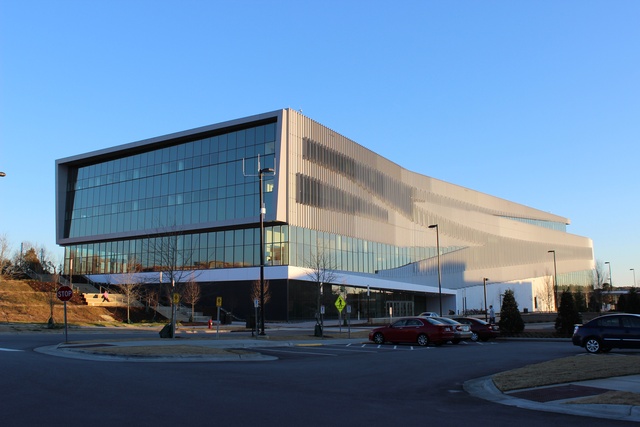
Norwegian firm Snøhetta are behind North Carolina State University’s four-storey library at the Centennial campus. Technological sophistication is a key feature of the 2013 library with the use of the robotic bookBot automated retrieval system. This controls over two million of the library’s books, labeling them with barcodes and storing them in a space far smaller than traditional library shelving.
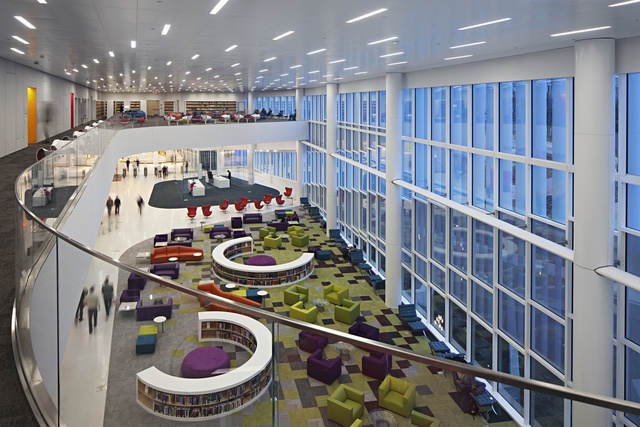
Also on site is a 3D printing workshop, positioned within a digital production suite that also accommodates a digital games research lab and a visualisation studio. The exterior boasts a fixed system of louvres, providing solar shading for expansive areas of glazing that let through a vast amount of natural light. The design even incorporates sustainable spaces through the addition of rain gardens and green roofs into the building’s infrastructure for storm water management.
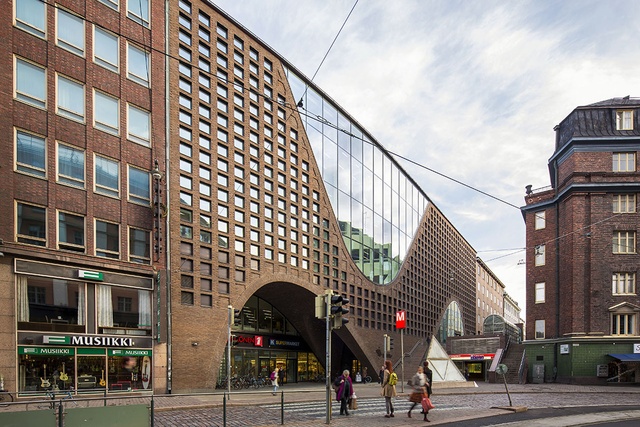
A seven-storey structure in the heart of Helsinki, the largest academic library in Finland is also one of the most acclaimed, being one of four projects shortlisted for the first Finlandia Prize. Connected by a large spiral staircase, the building needed to work with its position within the streetscape, being hemmed in by existing buildings but also featuring two street-facing facades. The need for quality natural lighting that would suit a library also had to be considered.
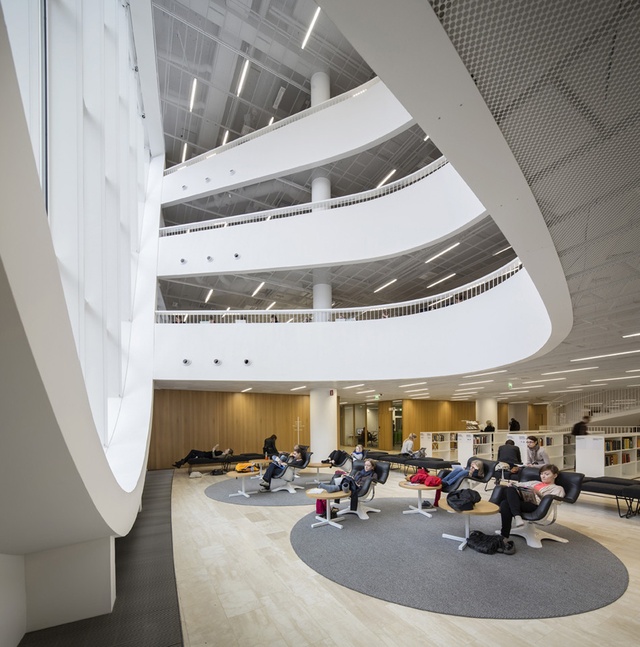
Anttinen Oiva Architects have created curving volumes which become voids through walls, floors and ceilings, and there is a lightwell visible from every floor, alongside large curving windows onto the street. Busy commercial spaces form a transitional zone between the institutional space of the library and the public space of the street, thereby integrating the library into the cityscape. There are a variety of spaces available for different functions inside - the study areas here are even coded according to the degree of silence they dictate.
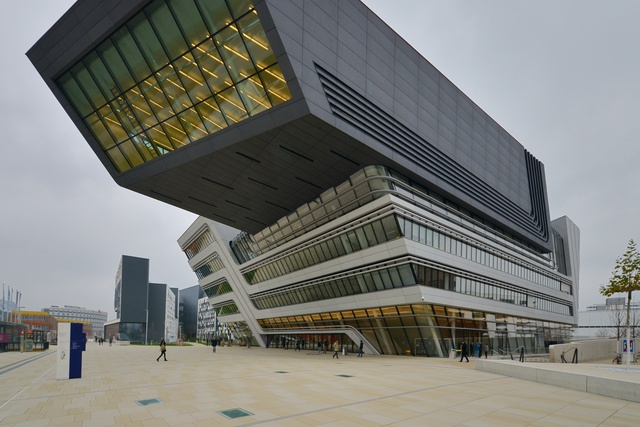
Zaha Hadid‘s library and learning centre at the Vienna University of Economics and Business opened in 2013 and at full capacity is built to hold a sizable population of 24,000 students and 1,800 staffers. The building includes classrooms, offices, function rooms, an auditorium and cafeteria alongside the library, showing a huge variety of functions within one space.
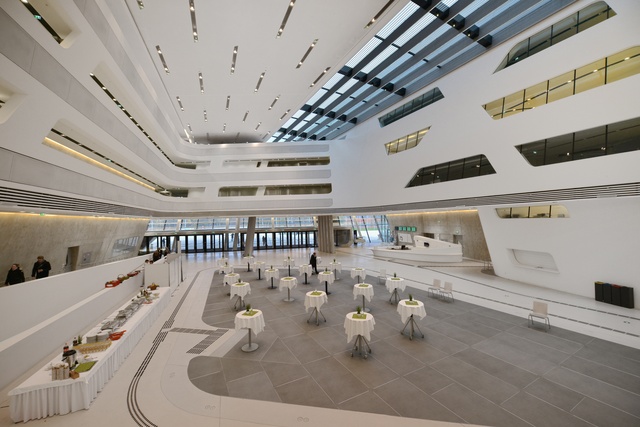
The atrium is flooded by natural light from the skylights above and the giant free-formed canyon serves as the public plaza of the center and of the school as a whole, and visitors access the library and management offices via ramps and stairways spiraling up. All areas are connected via platforms, terraces and galleries, echoing the idea of the pedestrian urban park.
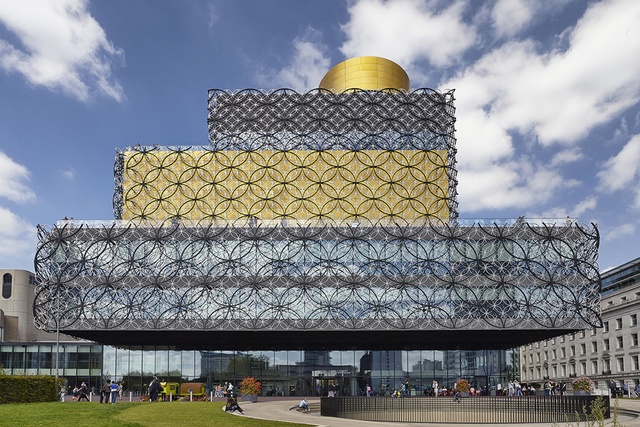
Dutch firm Mecanoo has created a library in Birmingham that truly works with the concept of outdoor spaces and flexibility of space. Built in 2013, the library boasts a circular open-air amphitheatre in front of the building that creates a dramatic visual link between the library, while also providing natural light and a sheltered outdoor space for staging events. Above the balcony is a second open-air space, with an elevated garden affording panoramic views over the city.
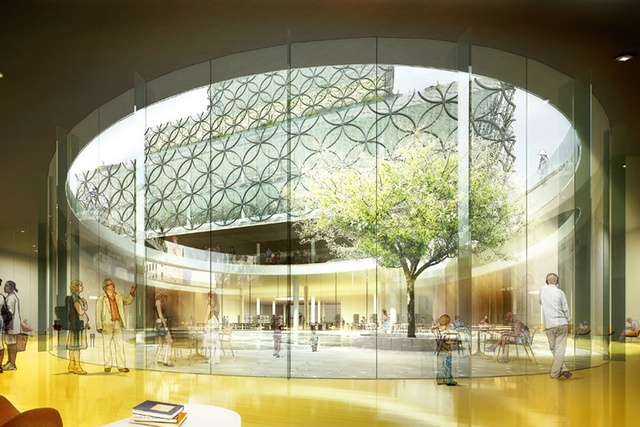
The interplay of overlapping rotundas inside the building aides navigation but also brings light and ventilation throughout. Energy efficiency is achieved through the buffering capacity of the building mass and the atria and the use of sun shading and reflective materials. The library’s function links with the Birmingham Repertory Theatre (REP), where new foyers and a 300-seat studio theatre were created to be shared between the REP and the library.
The future success of libraries depends on their ability to remain relevant, and to provide not only information services but also community-based services. Auer of Architectus comments that for the library to continue to be a successful, well-utilised building it must adopt the role of what used to be provided through civic buildings, and be able to offer a wide range of information, civic and social functions.
Although the cry ‘the book is dead’ has long been bandied around, the need for the physical form of information and knowledge, alongside digital, seems to be the continuing trend. The library has always been the soul and hub of a community, and will continue to be so, as long as it can offer the public a range of functions.
Auer summarizes, “Libraries have been very successful in adapting to social and information-based change, with a resurgence in the use of libraries and public money being invested in them. People want to experience knowledge in a social environment, and this will ensure that the future of the library remains positive.”

